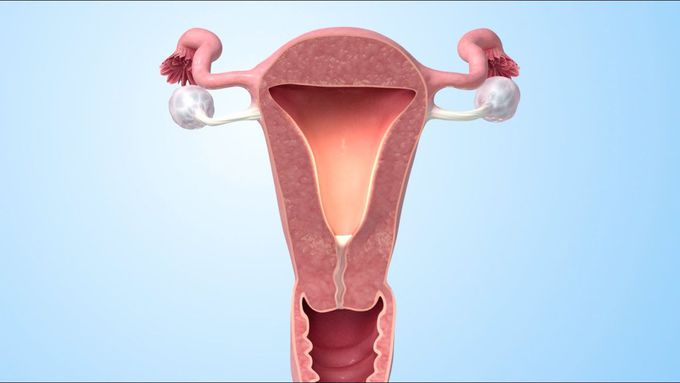


Progestin Implants
A series of events called the menstrual cycle happens about once every month to prepare a woman's body for pregnancy. Changing levels of natural chemicals in the bloodstream, called hormones, control these events. The reproductive organs affected by these hormones include the vagina, cervix, uterus, fallopian tubes, and ovaries. The ovaries produce two main hormones called estrogen and progesterone. As the level of estrogen begins to rise, it causes the normally thick mucus inside the cervix to thin out. Estrogen also triggers other hormones to cause one of the ovaries to release an egg. This process is called ovulation. If a woman has sex during this time, a man's reproductive cells, called sperm, can pass through the thinner mucus to fertilize an egg. In the uterus, estrogen causes the lining to thicken, which prepares it to receive a fertilized egg. Rising progesterone levels cause glands in the lining to release fluid that feeds the fertilized egg. Progesterone also causes the thinned out mucus in the cervix to become thick again, which prevents sperm from passing through. If an egg hasn't been fertilized, the levels of both estrogen and progesterone begin to fall. This drop in hormone levels causes menstruation, a process where the uterus sheds its inner tissue lining and blood through the vagina. A progestin implant is a form of birth control or contraception. It prevents pregnancy for up to three years. The device is implanted under the skin in a woman's upper arm. A progestin implant is a matchstick size, flexible plastic rod containing a progesterone-like hormone called progestin. It's designed to be able to show up on x-rays. The implant continually releases progestin in the body. High progestin levels help prevent the body from releasing other hormones that cause ovulation. Without ovulation, there is no egg available for fertilization, so a woman can't get pregnant. A second way progestin prevents pregnancy involves its effect on the mucus in the cervix. High progestin levels keep the mucus in the cervix thick enough so sperm can't get through it. A third way progestin prevents pregnancy involves its influence on the lining of the uterus. In contrast to natural progesterone, progestin is slightly different chemically. Over time, it makes the uterine lining thinner instead of thicker. As a result, if fertilization of an egg does take place, the lining may be too thin for it to stay in the uterus, so it passes out of the body with the next menstrual period. A doctor can insert a progestin implant during an office visit. To do this, the doctor will make two marks with a sterile marker. One for the insertion site and a second mark used as a direction guide during insertion. Then the insertion area will be cleaned with an antiseptic and numbed with a local anesthetic. Next, the doctor will use a special applicator to puncture the skin with a hollow needle containing the implant and slide it beneath the skin. Finally, the needle will be removed, leaving the implant behind. After the implant is placed, the doctor will ensure proper placement by feeling for both ends of the implant under the skin. A bandage will be placed over the insertion site. Menstrual bleeding with a progestin implant may include changes in bleeding frequency, bleeding intensity, and duration of each bleeding period. Although the implant can be removed sooner, it must be removed after three years. A doctor can replace it with a new implant at that time. If pregnancy is suspected, it's important for a woman to see her health care provider. The implant may need to be removed. A progestin implant is over 99% effective at preventing pregnancy. This means less than 1 out of 100 women will become pregnant each year using this form of birth control. For more information on any type of birth control, talk to your health care provider.

